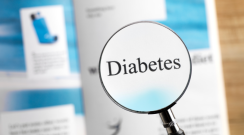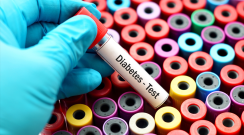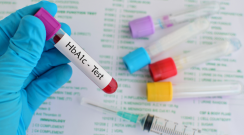Type 1 diabetes (T1D) and type 2 diabetes (T2D) are the two most common types of diabetes. While people with both T1D and T2D need to get to and keep their blood glucose (sugar) at goal, they differ in the causes and their treatment plan.
- Posted: 02 June 2023
Diabetes is a chronic illness that affects how your body breaks down the glucose (sugar) in your blood from the food that you eat. Glucose is a key source of energy for your cells, and its level in the blood need to be balanced and at or near your goal. When you have diabetes, your body has trouble balancing glucose levels in your blood leading to high blood sugar (hyperglycemia) or low blood sugar (hypoglycemia). There are two main types of diabetes, Type 1 Diabetes (T1D) when you make little or no insulin and Type 2 Diabetes (T2D) when you don’t make enough insulin and the insulin that you make does not work well.
Topics: Type 1 and Type 2 Diabetes
- Posted: 16 May 2023
Knowing about type 1 diabetes (T1D) and type 2 diabetes (T2D) and how they differ helps people at risk for diabetes and their healthcare team know when and how to check for diabetes, understand how to manage it, stay healthy and lower the risk of diabetes problems.
- Posted: 17 January 2023
Find out if you have diabetes so that your healthcare team can work with you to manage your diabetes and prevent diabetes problems before they start. Here are three blood tests that will tell you if you have diabetes.
Topics: Diabetes Management
- Posted: 13 March 2023
You may have diabetes and don’t know it. Finding out that you have diabetes early helps prevent diabetes problems. There are some tests that your healthcare team may do to see if you have diabetes or are at a higher risk.
Topics: Diabetes Management
- Posted: 13 March 2023
Get to know diabetes, how it affects your body, and how type 1 diabetes (T1D) and type 2 diabetes (T2D) differ. This will help you manage diabetes so that you get your blood glucose to goal.
Topics: Diabetes Management
- Posted: 31 May 2023
When you get your blood glucose levels to goal, plan your meals, stay active, and meet with your healthcare team as needed, you can lower the risk of diabetes problems and live a healthy life.
Topics: Diabetes Management
- Posted: 18 January 2023
Treating diabetes is not one size fits all as each person will have their own needs and schedules. Here is a look at how you can take care of your diabetes. People with diabetes should work with their healthcare team to learn how to best to manage their diabetes and reach their treatment goals.
Topics: Diabetes Management
- Posted: 31 May 2023
Diabetes treatment includes lifestyle changes such as healthy meals and more activity, taking medicine, and, in some cases, insulin treatment. Treatment plans will depend on the type of diabetes you have, your lifestyle, and ideas from your healthcare team. This quick guide provides some common ways to manage diabetes.
Topics: Diabetes Management









